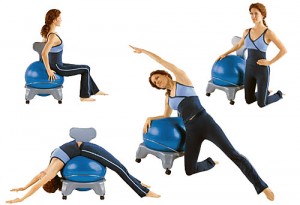January is National Eye Safety Month!
Your eyesight is a priceless commodity and once lost can never be brought back. Every day in the workplace employees are exposed to numerous hazards to the eyes from chemicals to flying objects. Protecting your eyes starts with education and utilizing the right equipment.
There are many different types of eye protection available to you and choosing the right equipment should be based on the hazards YOU face in your environment. Your eye protection should be;
•Strong, durable & lightweight
•Resistant to impact, penetration & heat
•Easy to clean
Eye Protection can include safety glasses,goggles,face shields or helmets. They should always fit snugly and be comfortable without becoming obtrusive throughout the workday. If you wear contact lenses be especially careful because they can absorb or trap particles and gases that can injure your eyes.
Remember: Regular prescription glasses can’t protect you on the job! You must wear only “approved” protective gear (check with your employer). OSHA requires that safety glasses or goggles meet standards developed by ANSI (American National Standards Institute).
Too many eye injuries occur because eye protection was required, issued & available- and NOT USED!!!
KNOW WHAT TO DO IN AN EMERGENCY
♦Particles in the eyes- Flush eyes with water until the particle comes out.
♦Chemical splash or burn- Hold your eyes open and flush with water for at least 15 minutes. Get immediate medical attention and check your MSDS for specific 1st aid treatment.
♦Blow to the eye- Apply a cold compress for 15 minutes to reduce pain & swelling.
♦Cuts near the eye- Bandage the eyes loosely and get immediate medical attention.
Always seek professional medical attention if warrented!
EYE CARE
Regular care of your eyes is also very important, eye exams on a regular basis (every 2-5 years) can uncover underlying medical problems such as diabetes , hypertension or the onset of Glaucoma. And for eye diseases such as Glaucoma, the damage may be detected through your normal exams before you notice any signs or symptoms.
According to the study “Vision Problems in the U.S.” by Prevent Blindness America and the National Eye Institute (NEI), there are nearly 2.3 million Americans ages 40 and older who have glaucoma. Glaucoma is the second leading cause of blindness in the world and the leading cause of blindness in African American and Hispanic populations in America.
Pertinent risk factors for Glaucoma;
•Over 40 years of age
•Race- Leading cause of blindness in african and hispanic populations
•Family history
•Diabetes- If you have diabetes you have a higher risk of developing Glaucoma
•Nearsightedness
•Eye injury or surgery
•Extended use of steroid medications
REMEMBER TO TAKE CARE OF YOUR EYES!





